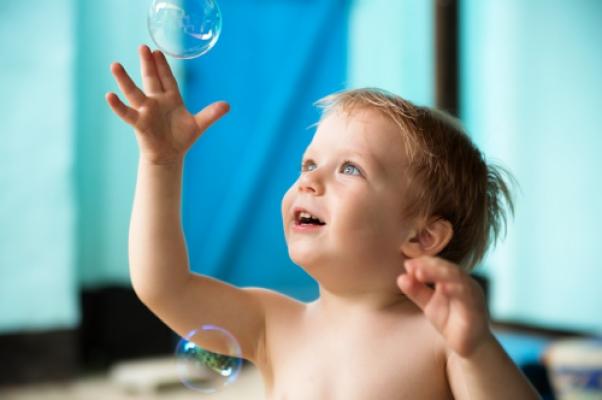Journal entry by Nora Allen —
Learn to wash baby ... without apprehension
Parents learn how to provide first aid to their baby at the maternity ward, with the help of medical staff. But back home, cleaning the umbilical cord or its ears can cause some apprehension. How to manipulate this little being so fragile without hurting him? Which products to use? There are no worries to have, the fears will disappear as you repeat with love and tenderness the same gestures every day.
Parents learn how to provide first aid to their baby at the maternity ward, with the help of medical staff. But back home, cleaning the umbilical cord or its ears can cause some apprehension. How to manipulate this little being so fragile without hurting him? Which products to use? There are no worries to have, the fears will disappear as you repeat with love and tenderness the same gestures every day.
Clean the umbilical cord
In pregnancy, the umbilical cord was the lifeline between you and your baby. This little bit unsightly, called stump, remains attached to the navel between 5 and 15 days after birth. It cleans systematically after bathing and changes it (if the cord has been in contact with urine or stool), to avoid possible infections and to facilitate healing.
From the base to the end
Above all, it is essential to wash your hands well, a prerequisite for any manipulation of a baby (change his diaper, give him the bottle, etc.). Once the baby is lying on the changing table, take a sterile pad soaked in antiseptic (the one you were told at the maternity ward). Then, pass the compress from the base to the end. Fold the compress and repeat the procedure until you have completely disinfected the cord. The latter will fall alone.
Disinfect the scar
The disinfection of the scar is prolonged one week after the fall of the cord. And you must never mix two different antiseptics, some react together.
Clean baby's ears
To clean the ears of a baby, you should never use conventional cotton buds! Choose baby cotton buds, bigger, so you do not go too far in the ear canal and touch the eardrum.
Avoid sudden movements
With regard to the roof and the back of the ear, it is advisable to clean the residues with soap and to get rid of small fluff with a cotton disc soaked in water. Be careful, a baby's ears are very fragile, so make sure your toddler does not make a sudden movement, holding his head firmly while you clean his ear canal.
Clean baby's nose
Before 2 years, a baby does not know how to blow his nose alone, he needs a little help. There are several methods to clean up the phlegm. The simplest is the use of a hydrophilic cotton wound in the shape of a small rocket. Introduce it into the nostril and remove the phlegm. Effective and fast, this method unfortunately does not remove all the phlegm responsible for viruses that proliferate in the otolaryngology (ENT). To cleanse the nose thoroughly, it is better to opt for saline or baby-fly.
Use saline
Sometimes, we manage to unclog the nose of a baby only with physiological saline. It exists in aerosol or in small ampoules (the aerosol dissolves better the phlegm). Clean his nose in the morning, and of course, when you see that the phlegm is bothering him to breathe. Lay your baby on the changing table, head turned to one side. Inject half of a blister into the nostril that is up or spray if you are using an aerosol. Repeat for the other side. The baby usually sneezes right after, which allows him to clear the phlegm.
The baby fly
Although little appreciated by babies, the baby fly is another possibility to clean his nose. It consists of a mouthpiece, a tube and a head that adapts to the baby's nose. With the tip, gently inhale the phlegm. In the head of the tube, a filter limits the suction pressure and retains phlegm. If they do not drain well, add a little saline to the nostrils, and a few minutes later, aspirate again.
Clean baby's eyes
Taking care of your baby's eyes is important because toddlers produce a lot more phlegm than adults. That's why you have to clean them every day, in the morning, when baby wakes up with eyes stuck.
Remove the phlegm
Take a sterile compress by the ends and fold it like a small parachute. Then, soak it with saline solution and pass it over your baby's eye, from the center to the outside, to eliminate phlegm. This action avoids infections of the inner membrane of the eye. Attention, it is always necessary to use one compress per eye, and not one for both eyes, to avoid a possible contamination.
www.thebabycarepedia.com
www.thebabycarepedia.com
Help Nora Stay Connected to Family and Friends
A $25 donation to CaringBridge powers a site like Nora's for two weeks. Will you make a gift to help ensure that this site stays online for them and for you?



